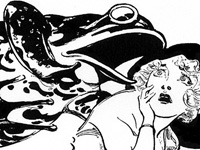As stated on the U.S Fish and Wildlife Service (FWS) website, the organization's "mission is to work with others to conserve, protect and enhance fish, wildlife and plants and their habitats for the continuing benefit of the American people."
While the menu for the FWS website is daunting, skip the "Kids, Educators, Parents" section, and try "History." The former is aimed toward the exploration of nature and the biological sciences, and would need modification for the history classroom.
For starters, under "History," educators can find four virtual exhibits, covering the National Conservation Training Center, Pelican Island, conservationists Olaus and Mardie Murie, and an FWS vessel, the Otter. The exhibits are small and largely text-based, although the exhibit on Pelican Island provides historical images. While specialized, the exhibits may prove of use for regional West Virginia history or information on conservation movement founders.
Additional resources include nine small historical images; period documents related to Rachel Carson, the U.S. Commission of Fisheries, and professional jargon; articles on topics ranging from fishery history to the limits of agroecology; law enforcement and FSW timelines; lists, including individual stations' centennial time capsule contents (what did employees feel best represented their station?); and oral history transcripts. Note that there are links to larger document databases, including FWS news releases dating as far back as 1914, under documents. This is easy to overlook, as other featured items are more prominent.
The Fallen Comrades list also provides insight into historical events. Listed deaths include the 1958 disappearance of the F.W.S. Grumman Goose N-720 and an employee, Lindgren, murdered by Italian hunters in 1922. Lindgren's death was used by journalistic factions to increase anti-immigration fervor.
Additional information of historical significance, particularly statistics, is tucked throughout the site. Try reading about climate change, wildfires, and wetlands trends.
If your students are animal lovers, consider having them select an endangered species, perhaps from their state. Each species' page includes federal documents related to their identification and recovery. These documents display how government interacts, not just with society, but with the country's fauna, a component of history which often goes unremarked.

 The University of Georgia's
The University of Georgia's 
